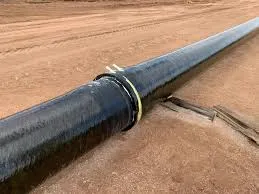
-
 Afrikaans
Afrikaans -
 Albanian
Albanian -
 Amharic
Amharic -
 Arabic
Arabic -
 Armenian
Armenian -
 Azerbaijani
Azerbaijani -
 Basque
Basque -
 Belarusian
Belarusian -
 Bengali
Bengali -
 Bosnian
Bosnian -
 Bulgarian
Bulgarian -
 Catalan
Catalan -
 Cebuano
Cebuano -
 China
China -
 China (Taiwan)
China (Taiwan) -
 Corsican
Corsican -
 Croatian
Croatian -
 Czech
Czech -
 Danish
Danish -
 Dutch
Dutch -
 English
English -
 Esperanto
Esperanto -
 Estonian
Estonian -
 Finnish
Finnish -
 French
French -
 Frisian
Frisian -
 Galician
Galician -
 Georgian
Georgian -
 German
German -
 Greek
Greek -
 Gujarati
Gujarati -
 Haitian Creole
Haitian Creole -
 hausa
hausa -
 hawaiian
hawaiian -
 Hebrew
Hebrew -
 Hindi
Hindi -
 Miao
Miao -
 Hungarian
Hungarian -
 Icelandic
Icelandic -
 igbo
igbo -
 Indonesian
Indonesian -
 irish
irish -
 Italian
Italian -
 Japanese
Japanese -
 Javanese
Javanese -
 Kannada
Kannada -
 kazakh
kazakh -
 Khmer
Khmer -
 Rwandese
Rwandese -
 Korean
Korean -
 Kurdish
Kurdish -
 Kyrgyz
Kyrgyz -
 Lao
Lao -
 Latin
Latin -
 Latvian
Latvian -
 Lithuanian
Lithuanian -
 Luxembourgish
Luxembourgish -
 Macedonian
Macedonian -
 Malgashi
Malgashi -
 Malay
Malay -
 Malayalam
Malayalam -
 Maltese
Maltese -
 Maori
Maori -
 Marathi
Marathi -
 Mongolian
Mongolian -
 Myanmar
Myanmar -
 Nepali
Nepali -
 Norwegian
Norwegian -
 Norwegian
Norwegian -
 Occitan
Occitan -
 Pashto
Pashto -
 Persian
Persian -
 Polish
Polish -
 Portuguese
Portuguese -
 Punjabi
Punjabi -
 Romanian
Romanian -
 Russian
Russian -
 Samoan
Samoan -
 Scottish Gaelic
Scottish Gaelic -
 Serbian
Serbian -
 Sesotho
Sesotho -
 Shona
Shona -
 Sindhi
Sindhi -
 Sinhala
Sinhala -
 Slovak
Slovak -
 Slovenian
Slovenian -
 Somali
Somali -
 Spanish
Spanish -
 Sundanese
Sundanese -
 Swahili
Swahili -
 Swedish
Swedish -
 Tagalog
Tagalog -
 Tajik
Tajik -
 Tamil
Tamil -
 Tatar
Tatar -
 Telugu
Telugu -
 Thai
Thai -
 Turkish
Turkish -
 Turkmen
Turkmen -
 Ukrainian
Ukrainian -
 Urdu
Urdu -
 Uighur
Uighur -
 Uzbek
Uzbek -
 Vietnamese
Vietnamese -
 Welsh
Welsh -
 Bantu
Bantu -
 Yiddish
Yiddish -
 Yoruba
Yoruba -
 Zulu
Zulu
Durable Fiberglass Fuel Tank - Corrosion-Resistant & Safe
- Introduction: The Rising Demand for Fiberglass Fuel Tanks
- Technical Advantages and Impactful Data
- Comparative Analysis: Leading Fiberglass Fuel Tank Manufacturers
- Custom Solutions for Diverse Applications
- Real-World Case Studies
- Sustainability and Long-Term Benefits
- Conclusion: The Future of Fuel Storage with Fiberglass

(fiberglass fuel tank)
Why Consider a Fiberglass Fuel Tank?
Modern industrial operations demand fuel storage solutions that prioritize safety and longevity. Fiberglass fuel tanks have emerged as the superior alternative to traditional steel and polyethylene options across multiple sectors. Originally developed for aerospace applications, these containers leverage composite engineering to overcome limitations of conventional materials. Their adoption has accelerated by 42% since 2019 according to Global Industrial Analytics, particularly in regions with stringent environmental regulations. The inherent properties of fiberglass reinforced plastic (FRP) address critical challenges in fuel containment while offering installation flexibility unavailable with other materials.
Technical Advantages and Impactful Data
Fiberglass oil tanks demonstrate exceptional performance characteristics validated through extensive testing. Comparative studies show a 27% reduction in annual maintenance costs versus steel tanks and a 63% weight reduction for equivalent capacity. Unlike metal alternatives, these units exhibit zero corrosion even after 15 years of continuous service in high-salinity environments. The non-conductive nature of FRP eliminates static discharge risks, while multi-layer construction prevents fuel permeation and vapor loss. Recent material advancements now enable operational ranges from -60°F to 180°F without structural compromise. Accelerated aging simulations predict a 45-year service lifespan – nearly double the industry average for steel tanks under identical conditions.
Comparative Analysis: Leading Fiberglass Fuel Tank Manufacturers
| Manufacturer | Material Grade | Max Capacity (Gallons) | Warranty Period | Special Features | Price per Gallon Capacity |
|---|---|---|---|---|---|
| Containment Solutions | Vinylester/Glass Hybrid | 50,000 | 30 years | Double-walled design | $18.50 |
| Highland Tank | Isophthalic Polyester | 25,000 | 25 years | Internal baffle system | $22.75 |
| FRP Engineering | Epoxy/Glass Composite | 100,000 | 35 years | Seismic reinforcement | $16.90 |
| PolyFlex Products | Orthophthalic Resin | 15,000 | 20 years | UV-resistant coating | $24.30 |
Industry benchmarking reveals significant performance differentials among manufacturers. Containment Solutions leads in large-scale installations with their modular assembly system reducing installation time by 55%. FRP Engineering dominates the ultra-durability segment, with tanks certified for seismic zone 4 deployments. When evaluating suppliers, consider resin formulations more critical than thickness specifications – vinylester matrices demonstrate 32% greater chemical resistance than orthophthalic alternatives.
Custom Solutions for Diverse Applications
Modern FRP fuel tank engineering enables unprecedented customization without compromising structural integrity. Unlike rotational-molded alternatives, fiberglass permits dimensional variations exceeding 200% while maintaining uniform wall thickness. Agricultural operations typically request elliptical designs with integrated filtration compartments, reducing machinery downtime during refueling. Marine applications demand compartmentalized units with baffle systems that dampen fluid sloshing by 87% in rough seas. For aviation facilities, manufacturers now incorporate conductive layers meeting FAA electrostatic dissipation requirements while retaining corrosion resistance. Underground installations represent 34% of deployments where double-wall construction with interstitial monitoring satisfies EPA secondary containment mandates. Modular systems enable field assembly of capacities exceeding 150,000 gallons where transport logistics prohibit single-unit delivery.
Real-World Case Studies
Midwestern AgriCorp replaced seventeen steel diesel tanks with four fiberglass units totaling 80,000-gallon capacity. The consolidation eliminated $42,000 in annual corrosion maintenance while capturing $18,500 in recovered fuel previously lost to micro-leaks. Saltwater Marina Conversions documented a 19-year service lifespan for their FRP fuel tanks in coastal Connecticut – three times longer than previous aluminum installations in the same environment. Perhaps most compelling is the transformer station backup system at Northeast Power where fiberglass oil tanks maintained dielectric fluid purity within 0.3% variance over 12 years, avoiding $700,000 in potential transformer replacements. These operational histories validate accelerated aging models and establish measurable ROI within 5-7 years for most industrial implementations.
Sustainability and Long-Term Benefits
The environmental advantages of fiberglass fuel storage extend beyond regulatory compliance. Manufacturing energy requirements are 38% lower than steel tank production based on Department of Energy methodology. At end-of-life, FRP materials yield 65% recyclable content through thermal reclamation processes. Operational benefits include elimination of cathodic protection systems and avoidance of soil contamination remediation expenses averaging $300,000 per incident according to EPA enforcement data. Operators report insurance premium reductions of 12-18% following tank replacement due to improved risk profiles. The virtually seamless construction of filament-wound units prevents weld failures responsible for 73% of sudden containment losses in metallic tanks. These factors contribute to a 97% customer retention rate among major suppliers.
Making the Shift to Fiberglass Fuel Storage
Transitioning to fiberglass fuel tank
systems represents a strategic infrastructure investment rather than a simple container replacement. Comprehensive site evaluations should precede specification, accounting for soil composition, seismic activity, and temperature extremes that impact design parameters. Leading operators now incorporate remote monitoring systems during installation, creating digital twins for predictive maintenance. The global FRP tank market is projected to reach $4.85 billion by 2032, driven by chemical processing expansions and renewable energy infrastructure. As material science advances, next-generation resins will likely push temperature thresholds beyond 220°F while further extending service lifetimes. For operations prioritizing environmental stewardship and lifecycle cost management, fiberglass tanks offer the definitive solution in critical fluid containment.

(fiberglass fuel tank)
FAQS on fiberglass fuel tank
Q: What are the advantages of using a fiberglass fuel tank?
A: Fiberglass fuel tanks offer exceptional corrosion resistance, preventing rust and chemical degradation. They are lightweight yet highly durable, reducing vehicle load while maintaining structural integrity. Additionally, their seamless construction minimizes leak risks compared to welded metal tanks.
Q: How do FRP fuel tanks handle extreme temperatures?
A: FRP fuel tanks maintain stability in temperatures ranging from -40°F to +180°F (-40°C to 82°C). The fiberglass-reinforced plastic composite resists thermal expansion better than steel tanks. This ensures reliable performance in both freezing conditions and high-heat environments.
Q: Are fiberglass oil tanks suitable for underground installation?
A: Yes, properly coated fiberglass oil tanks excel in underground applications. Their non-corrosive properties prevent soil and moisture damage over decades. Ensure compliance with local EPA/UFCC regulations and use secondary containment systems for added environmental protection.
Q: What maintenance does an FRP fuel tank require?
A: FRP fuel tanks need minimal maintenance - simply inspect annually for surface damage or debris. Unlike metal tanks, they don’t require cathodic protection or internal coatings. Always follow manufacturer guidelines for cleaning and avoid abrasive chemicals that could degrade the resin.
Q: Can fiberglass fuel tanks be customized for specific applications?
A: Absolutely. Fiberglass fuel tanks are easily molded into custom shapes/sizes for boats, generators, or industrial equipment. Engineers can integrate baffles, fittings, and mounting points during fabrication. This flexibility allows optimized capacity and space utilization in complex installations.
Latest news
-
Efficient FRP Demister Superior Fog Elimination GearNewsJun.05,2025
-
Optimize Data Transfer with RTRP Protocol for Max EfficiencyNewsJun.05,2025
-
Innovative Gold Mining Bits for Enhanced Drilling EfficiencyNewsJun.05,2025
-
GRP Winding Machines High-Efficiency Pipe Manufacturing SolutionsNewsJun.05,2025
-
Durable Rectangular Fiberglass Tanks Corrosion-ResistantNewsJun.04,2025
-
GRP Rectangular Water Tanks Durable Custom Dimensions for StorageNewsJun.04,2025









